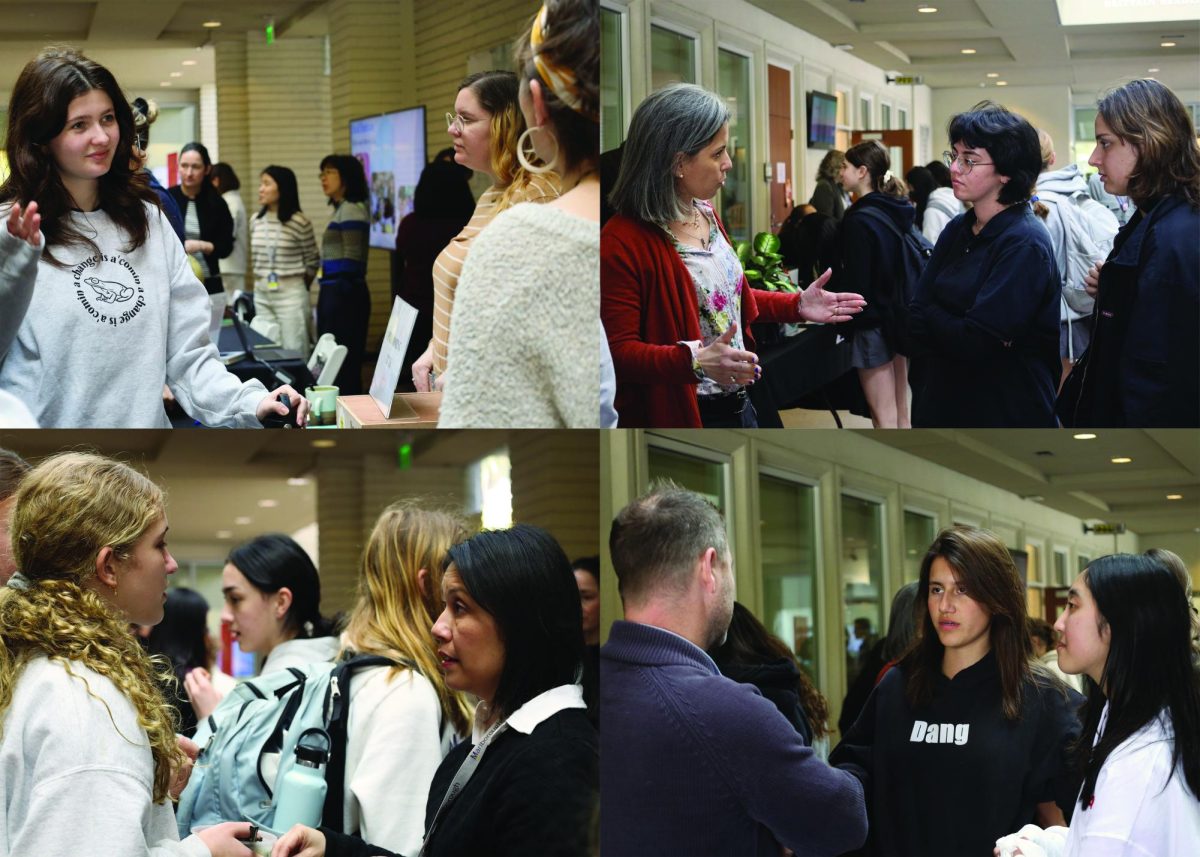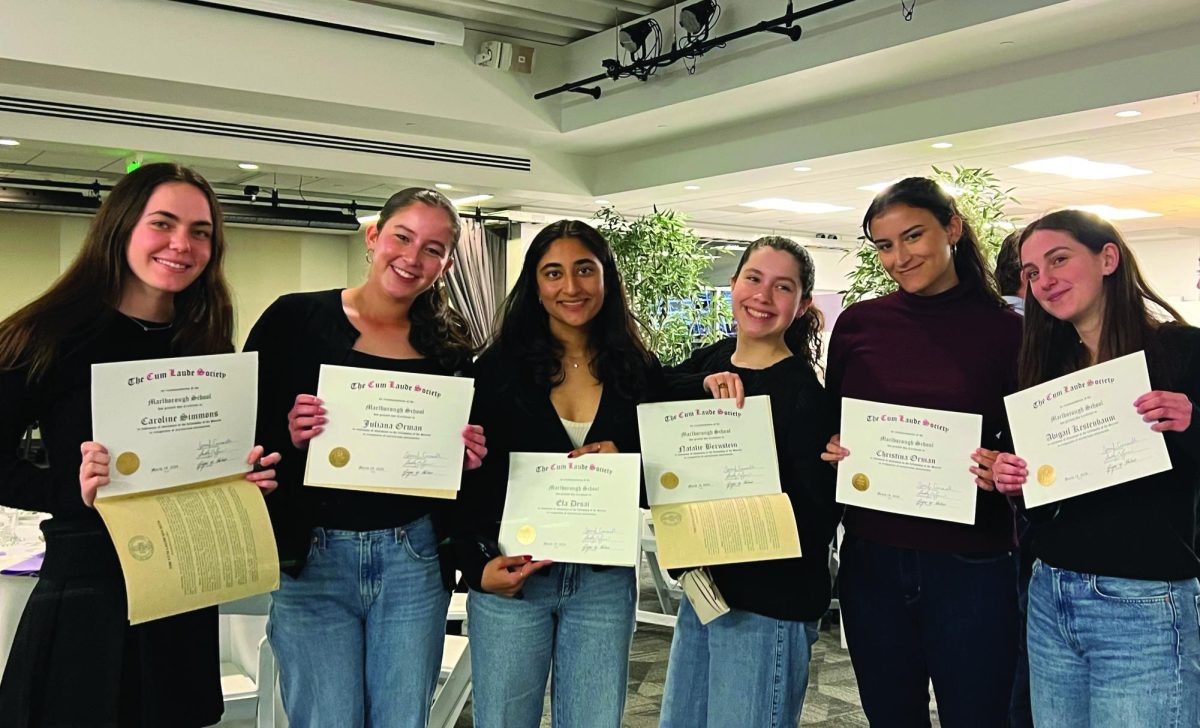Background
To many city-dwellers, ridesharing apps are considered a necessity. According to CNBC, some people are now forgoing cars and using ridesharing services as their primary mode of transportation. There are a myriad of ridesharing apps, with the most prominent companies being Uber and Lyft, according to Business Insider.
Uber, one of the first ridesharing apps, was founded by Travis Kalanick in 2009. According to a survey sent out to the Marlborough student body about ridesharing companies, Uber is also the most used ridesharing company at Marlborough. 63% of 103 student respondents to a UV survey sent to the Marlborough student body said they use Uber most frequently. Although Uber was 150% more expensive than a cab in 2010, Uber’s user base grew largely through word of mouth and promotions like granting free rides. In 2011, Uber began expanding beyond San Francisco into cities like Los Angeles, New York City and Paris. Kalanick wanted Uber to be part of everyday use, making it more accessible for all socioeconomic classes.
Soon after, Lyft was started in 2012. Lyft is the most used ridesharing app for 27% of Marlborough students according to the UltraViolet survey. Founders of Lyft, John Zimmer and Logan Green, aimed to provide a full alternative to car ownership.
Although it is against Uber and Lyft’s policies for minors to ride alone, HopSkipDrive only provides rides to minors. The company thinks of itself as safer than other ridesharing companies because of its 15-point background check for its drivers. Founded in 2016 by working moms Joanna McFarland, Carolyn Yashari Becher and Janelle McGlothin, HopSkipDrive strives to provide safe, easy access to rides with experienced caregivers who have to have at least five years of caregiving experience. Due to the limited amount of drivers, parents have to schedule rides eight hours in advance. As of now, the company is limited to only Los Angeles and San Francisco.
Effects
The increased popularity of ridesharing services like Uber and Lyft has impacted taxi services nationwide, particularly in West Coast cities including Los Angeles and San Francisco according to Forbes.
Ridesharing services often do not have to follow the same strict local regulation on the taxi industry that dictate things like prices and colors of cars. Ridesharing services are often able to avoid these regulations because they are not required to have the same insurance as taxi drivers nor do they need taxi licenses or permits, like taxi medallions, which may cost up to $1 million per permit. According to the Los Angeles Times, the taxi business in San Francisco, home to both the Uber and Lyft headquarters, has declined by more than two-thirds since Uber and Lyft began operating. Similarly, in Los Angeles, the total number of taxi trips taken has plummeted nearly 30% since 2014.
According to Forbes Magazine, Uber drivers often earn more than taxi drivers. The difference in pay is largely attributed to the flexible hours the Uber business model gives its drivers, which results in drivers spending more time with passengers in their cars and earning income. The ability for ridesharing drivers to choose their hours also allows drivers to work the most profitable hours or drive as a part-time job as supplemental income, while taxi drivers, who are employed full time by taxi companies, don’t have this freedom.
Attention has also been called to the salaries of ridesharing drivers. Numerous studies have suggested that Uber pays its drivers less than the company claims. Uber drivers are independent contractors, allowing Uber to reduce labor costs because the drivers are not employees of the company. According to The New York Times, Uber is known to have “troubled relationships with drivers, who have complained for years about falling pay and arbitrary treatment.” According to Bloomberg, a number of studies were conducted to find that the average Uber driver is paid about $15.80 per hour after Uber service fees are accounted for.
However, this number does not account for the cost of drivers’ gasoline, as well as car maintenance, repairs and insurance. According to the same Bloomberg article, an average Uber driver makes about $10 an hour after all of these factors are accounted for, despite the company’s claims that it pays drivers around $25 an hour. While this number varies by location and type of car, there are not many places in the US where people can live well off of a $10 an hour salary, which is $5 less than what the hourly minimum wage will be in Los Angeles in 2020.
Ridesharing apps can also provide an alternative to the expenses of cars. According to Business Insider, ridesharing apps are used most in big cities like San Francisco, Los Angeles and Boston. More than 250,000 Lyft users have reported getting rid of their car because they now use ridesharing services.
Dean of Student Life Regina Rosi-Mitchell moved to Los Angeles before ridesharing apps had been invented, but said she believes she would’ve delayed buying a car if ridesharing existed earlier.
“Had Uber or Lyft been around [when I moved to Los Angeles,] it would have been a real lifesaver, and I probably would have delayed buying a car for even longer,” Rosi-Mitchell said. “I think they are part of the sharing economy, and there is no reason to have a car if you don’t need to.”
Ridesharing apps have taken advantage of the sharing economy, or economic activity that capitalizes on interactions between businesses and peers, because ridesharing users can request and pay the drivers online. Outside of the economic impact, ridesharing services have had a substantial effect on drunk driving. According to Moll Law Group, the number of DUI arrests in 10 different cities have decreased as more people use ridesharing services.
Ridesharing apps make it easier for people to find a ride—and avoid driving themselves—while under the influence of alcohol or drugs. 53% of respondents to the UltraViolet survey who attend parties indicated that they use ridesharing services to get home.
Additionally, according to a January 2015 report commissioned by Uber and Mothers Against Drunk Driving, 78% people in metropolitan urban markets including Miami, Chicago and Austin, indicate that their friends are less likely to drive drunk with options like Uber. 93% recommend their friends take Uber instead of driving on occasions on which they have been drinking alcohol.
Teenagers using ridesharing services as their designated driver keeps them safer as they avoid drinking and driving according to DriversEd.com. However, according to Dr. Jennifer Powell-Lunder, psychologist and co-author of Teenage as a Second Language, it is also possible that teenagers are now drinking more frequently or in excess amounts because they plan to use ridesharing services and, therefore, do not have to worry about driving drunk or finding a safe ride home.
An anonymous Upper School student said that Uber and Lyft allow her to drink at parties knowing that she has a safe way to get home.
“If Uber and Lyft didn’t exist, I probably wouldn’t drink at parties or my friends and I would decide on a designated driver every time… it would take a lot more planning because I personally would still be responsible and take care of my friends and myself,” she said.
The student also commented on the risk of drunk teens getting into ridesharing cars alone.
“I think [ridesharing is] only safe with multiple people especially if you’re intoxicated because you want to be able to be aware and alert whenever you get into an Uber or Lyft. Even though it is safer because you’re not driving drunk, you still have to stay safe by being able to be coherent in some way,” she said.
Regardless of safety concerns, 66% of UV survey respondents said they have taken a rideshare alone. Despite the convenience and popularity of ridesharing services, there are a number of risks that accompany them as well.
According to SuperMoney, an online financial comparison platform, some of these risks include a lack of professional driving qualifications, an unreliable background check system and a lack of liability. For example, a taxi driver in Los Angeles “must have fingerprints on file and must pass a nationwide FBI criminal background check,” whereas a potential Uber driver only needs a working car.
Although Uber claims to have a reliable background check system, NBC4 ran background checks on Uber drivers and discovered numerous drivers with criminal records including assault and drunk driving.
Furthermore, when a person rides with Uber, he or she agrees that the company will not be held responsible for the safety of their drivers or the quality of their services. These rideshare companies are able to eliminate liability because the drivers are independent business owners. As a result, the companies are not held responsible for any cases of assault by drivers.
This lack of regulation can make people hesitant to use ridesharing services. 70% of UV survey respondents who do not use ridesharing apps said their parents do not allow them, and 57% of survey respondents said they have felt unsafe in a ridesharing car.
“I don’t usually rideshare because I’m scared that the driver will harass me, or make weird comments,” SarahMae ’22 said.
Further, while many people had hoped that ridesharing services would decrease traffic and pollution by encouraging people to use their own cars or get rid of their car altogether, it appears to be having the opposite effect.
According to The Washington Post, Uber and Lyft services are actually attracting people who before used to take public transit, walk or bike. For instance, a study found that traffic in New York became even more congested, because the increase in ridesharing services caused a decrease in the use of public transportation like the subway and buses. According to data from a partnership between the USC Price Center for Social Innovation and the Neighborhood Data for Social Change, 6.8% of Los Angeles residents utilize public transportation, and transit ridership is declining rapidly—down nearly 20% since 2013. It is unclear whether this decline is due to the proliferation of expensive ridesharing services, however.
Grace ’19 suggested that ridesharing could not have replaced public transportation, which was never popular in Los Angeles.
“In other parts of the country, Uber and Lyft have probably led to decreased use of public transportation, but in Los Angeles, use of public transportation was so low to begin with that I’m not sure if it created a difference,” Grace said.
Use in the Marlborough Community
While Uber and Lyft technically require minors to be accompanied by an adult, over 92% percent of UV survey respondents said they have used a ridesharing service.
According to the Marlborough Student Handbook, “The School neither endorses nor prohibits the use of such Car Services.”
Dean of Student Life Regina Rosi Mitchell said while she understands the rationale behind age restrictions, she believes it is ultimately up to parents to decide if their children can use ridesharing apps.
“There is the safety issue, but I also think that there is a discussion to be had at home. I don’t think that the school should be saying whether you can use the apps,” Rosi Mitchell said.
Despite the age restriction, ridesharing apps can offer students an alternative to taking the bus. While Auxiliary Services Manager Scott Appel said he has not noticed a decrease in bus usage, some students view Uber or Lyft as a more appealing option than the bus.
For Amanda ’19, Lyft is a cheaper form of transportation to get to and from school.
“I take Lyft because for me and my sisters to get home it’s cheaper to take one rideshare car than to pay the bus fee for three of us…thousands of dollars cheaper,” Amanda said.
Lyft has become popular than Uber among some Marlborough students, including Amanda, due to claims that Lyft drivers are better treated and because of the Uber corporation’s political stances.
“Uber drivers broke a strike when taxi drivers in New York were protesting Trump and his Muslim ban, which I really didn’t like,” Amanda said.
Nelson still prefers Uber for its convenience and strong business model.
“I think Uber has tapped into a niche that I didn’t know was there. It really says something that Uber specifically has withstood so much controversy and still made significant profits,” Nelson said.
Aside from a way of getting to school, ridesharing apps give students a convenient method of traveling when their parents are unavailable. This is especially useful for older students who have not yet learned to drive.
Amy ’19 said although her parents are insistent about her getting a license, she is not as concerned because of the availability of ridesharing apps.
“I have the ability to order a car at any moment, so I don’t really need to know how to drive,” Amy said.
Furthermore, some students feel that easy access to these apps discouraged them from working towards getting their licenses. Of respondents to the UV survey who are legally eligible for a drivers’ permit or license, only about 50% said that they have one.
“I think that [ridesharing] has definitely made people more reluctant to get their permits—it’s like, why would you want to put in the effort when you can just Uber?” SarahMae said.
Amy agreed that Uber has allowed her to be mobile without the ability to drive.
“If Uber didn’t exist I would have been more adamant about getting my license… it would have meant that I couldn’t go places, I couldn’t travel around the city as much. I would have had to get my license or just stay at home.”
















